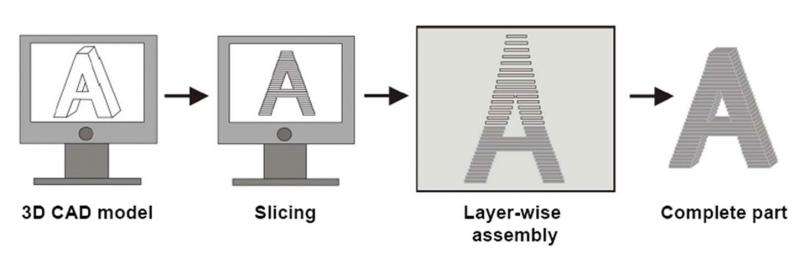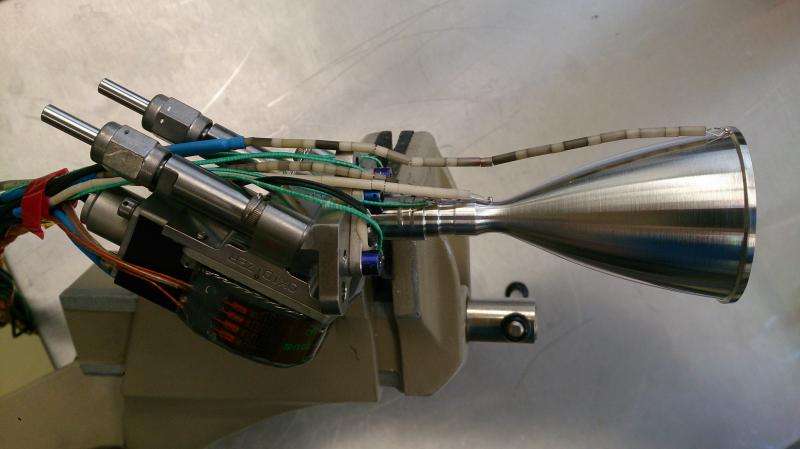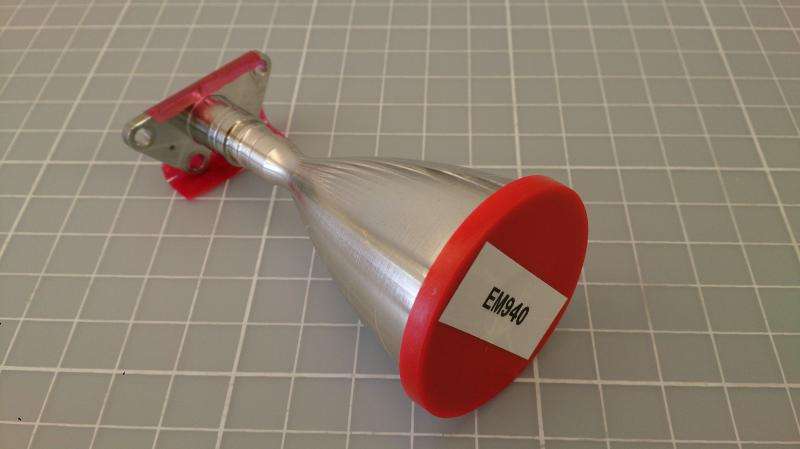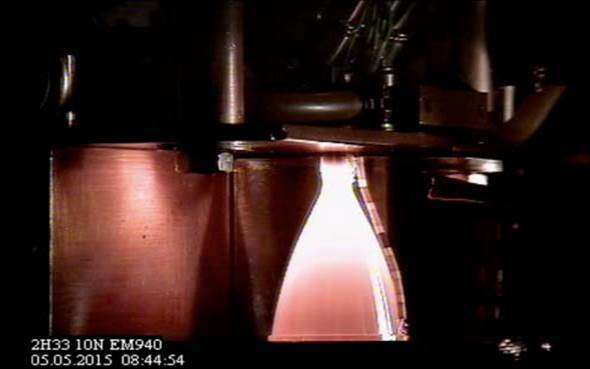Hot firing of world's first 3D-printed platinum thruster chamber

The world's first spacecraft thruster with a platinum combustion chamber and nozzle made by 3D printing has passed its baptism of fire with a series of firings lasting more than an hour and 618 ignitions.
"This is a world first," explains Steffen Beyer of Airbus Defence & Space, managing the project. "The firings included a single burn of 32 minutes, during which a maximum throat temperature of 1253°C was attained.
"It demonstrates that performance comparable to a conventional thruster can be obtained through 3D printing."
3D printing involves building up an object in layers rather than conventionally cutting unwanted material from a solid block, meaning that much less material is needed to make a given item.
The combustion chamber for the 10 N hydrazine thruster was printed in platinum–rhodium alloy using a laser beam applied to a metal powder bed.
"The aim was to test this alternative manufacturing method as a way of reducing material costs," says Laurent Pambaguian, overseeing the project on the ESA side.
"At the start we were by no means certain it could be done, or even whether the metal powder could be prepared to the appropriate quality.
"For production we ended up using a laser machine normally employed for making jewellery, which is the current industrial state-of-the-art for manufacturing with these metals."
"Considering that platinum currently costs €40 a gram, 3D printing offers considerable future savings," added Dr Beyer.
"We produce 150–200 thrusters in this class per year for different customers. 3D printing should allow shorter production cycles and a more flexible production flow, such as manufacturing on demand."
The prototype thruster was produced and tested at the Airbus Defence & Space facility in Lampoldshausen, Germany, through an ESA project called Additive Manufacturing Technologies for Advanced Satellite Thrust Chamber, AMTAC.
The platinum–rhodium was supplied by Germany's Heraeus company, then atomised by the Nanoval firm, with the additive manufacturing process overseen by Germany's Fraunhofer Institutes of Laser Technology, in Aachen, and Machine Tools and Forming Technology, in Augsburg.
"Platinum–rhodium was chosen for this first phase as the most mature platinum alloy for additive manufacturing," explained Dr Beyer.
"Then, in the next phase, we will attempt to print using a new alloy, platinum–iridium, which has performance advantages. This alloy cannot easily be manufactured by traditional techniques like casting and forging, so printing is the only way it can be harnessed for space use."

The project is part of ESA's long-running Advanced Research in Telecommunications Systems programme, ARTES.
"This successful test is a major step towards the goal of full product qualification under ARTES," says Clive Edwards, ESA telecom platform engineer.
"Thrusters made using this technology have exceptional potential for the satellite reaction control thruster market, offering class-leading performance at competitive prices."

"This latest success opens the way to further developments," says Tommaso Ghidini, head of ESA's Materials Technology section. "We aim to move to other materials, including Inconel and copper, for larger volumes, progressing to kilonewton-scale thrusters for both spacecraft and launchers."
"Our to-do list 'roadmap', prepared with the active participation of industry and the Member States, summarises and coordinates the work European industry needs to perform to routinely employ 3D-printed parts for space, including all necessary qualification and verification processes."
As Mikko Nikulainen, head of ESA's Component Technology and Space Materials Division, underlines: "The potential of 3D printing makes it an important element of our new advanced manufacturing initiative, which focuses on a range of technologies to slash European manufacturing costs and lead times while improving performance and boosting competitiveness."

Provided by European Space Agency




















